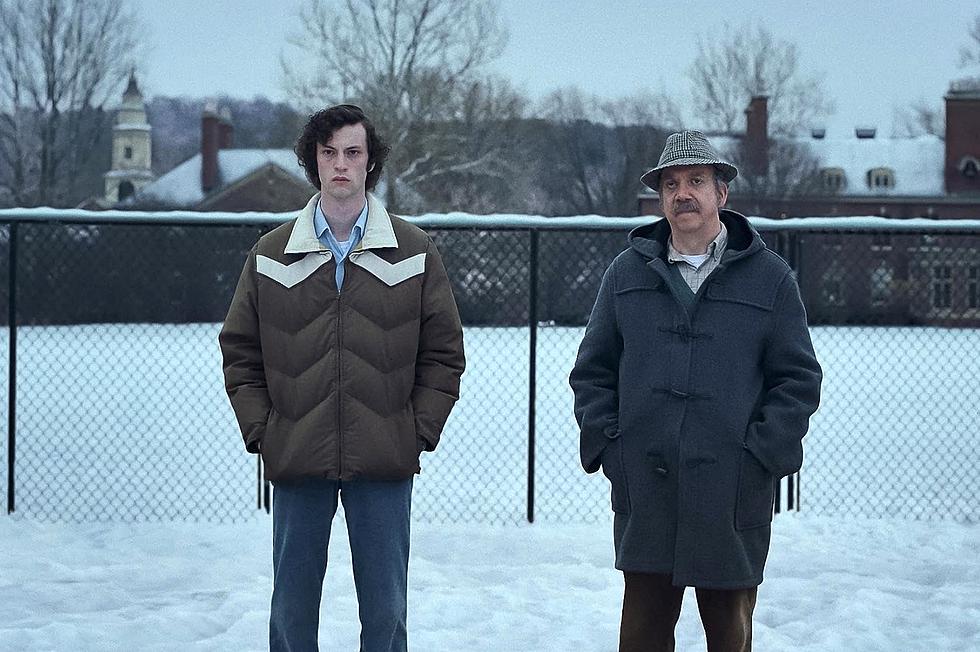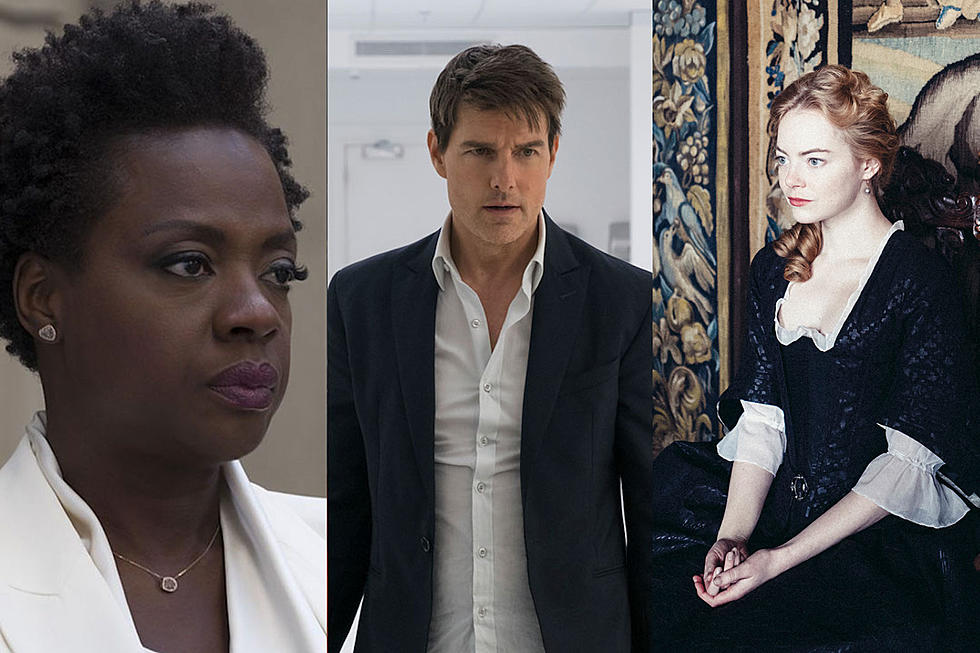
‘The Holdovers’ Review: A Melancholic Throwback From Alexander Payne
Alexander Payne knows how to set a mood. He begins his 1970-set dramedy The Holdovers with the sorts of MPAA ratings cards, company logos, and opening titles that would have appeared in a movie that was actually made in 1970. The Holdovers’ distributor, Focus Features, didn’t exist in 1970, so Payne went to the trouble of creating a period-appropriate (and suitably garish) logo for them. These credits carry on much longer than they would in a modern film. (Most film credits except for the cast list used to play before the movie, not afterwards.) Maybe my eyes were playing tricks on me, but I would swear he even added an almost imperceptible wobble to them to really capture the flavor of an old celluloid. There are definitely some audible pops and hisses like the ones that used to provide the subtle soundtrack to any beat-up film print as it rattled through a 35mm projector.
All of that establishes a tone for what’s to come. The Holdovers’ story is relatively straightforward; even formualic. It charts the relationship between a disciplinarian boarding school teacher and an undisciplined student, a character dynamic that’s appeared onscreen countless times before. But the material is elevated here by three beautiful lead performances and by Payne’s hyper-focused attention to the authentic texture of the period and of life in general. The frame is filled with observed but uncommented-upon details, like the way a downtrodden character’s car might only open from the passenger side door, or how every adult in this movie has some sort of tobacco product or an open bottle of whisky within arm’s reach at every moment. The film seems to exist in a real world populated by fully dimensional people.
READ MORE: Great Films That Cost Less Than $1 Million to Make
The most important people in it are that teacher, Paul Hunham (Paul Giammatti), and that student, Angus Tully (Dominic Sessa), as well as the head of their boarding school’s kitchen, Mary (Da’Vine Joy Randolph). Their tale belongs to that dependable sub-genre, the Depressing Christmas Movie, where the holly and the jolly of the season are exchanged for an exploration of how it feels to be alone during the time of year when families typically come together. (See also: It’s a Wonderful Life, Catch Me If You Can.)
Angus’ mother has recently remarried, and she asks him to “hold over” at school during winter break so she can take her honeymoon. Hunham, a hugely unpopular professor of ancient history, is forced to watch Angus and a few other orphaned students over Christmas because he has refused to bend to the will of his boss and give a bad student (with wealthy, politically connected parents) an unearned passing grade. Mary is on hand to make their meals, in part because she has suffered a heartbreaking loss. Her son, a former student at the same school, was recently killed in Vietnam.
Fractious relationships between privileged high school students and frustrated adults is not a new subject for Payne; that notion was also at the core of his great 1999 comedy Election. That film focused on a truly bad teacher (Matthew Broderick’s Mr. McAllister) and his relationship with a gifted kid; The Holdovers begins in similar territory, with Giamatti playing a hilariously grouchy professor who can’t stand his students, including the incorrigible Angus. But spending all that time together over the holiday season gradually brings them closer, and they come to recognize that despite their intense animosity, they have an enormous amount in common.
Reunited with the star of his popular indie hit Sideways, Payne makes exceptional use of Giamatti and his unique propensity for wringing both humor and pathos out of a single line of dialogue or awkward glance. (A power heightened by Hunham’s physical affliction, a lazy eye.) Sessa, making his feature acting debut, is impressively up to the task of going toe-to-toe with him in scene after scene. He’s a real discovery.
Payne revels in Hunham and Angus’ flaws, and he has a knack for expressing things about them without overtly saying them. We never learn, for example, why Angus spends most of the movie with a big bruise under his right eye, but given his bad attitude and big mouth, it’s pretty safe to assume he deserved it, however he got it. And Mary’s backstory, her reason for being at this posh private school in the first place, is heartbreakingly obvious before she ever reveals it out loud much later in the film. Over the course of The Holdovers, Payne doesn’t so much soften these characters’ hardened exteriors as he does expose the wounds at their core that have shaped how they became such damaged people in the first place. And he leavens the sadness with a lot of big laughs; another rarity among movies these days.
Hunham talks a lot about old-fashioned notions of chivalry, honor, and truth, and bemoans the state of a world “on fire” that he no longer recognizes or understands. After he and Angus finally begin to communicate with one another, Hunham also explains his belief that we must look to the past in order to understand the present. Setting this movie in the 1970s feels like Payne putting that philosophy into practice — not just so we can find the parallels between that time and our own in the world at large, but also in the world of movies. In 1970, Hollywood regularly made movies like The Holdovers; sadly sweet character studies about misfits and dropouts finding common ground. These days, it almost never happens. And maybe if Focus Features really had released it 50 years ago like the opening credits suggest, this little but deeply felt and very lovely movie wouldn’t feel quite so special. But then again, maybe it would.
RATING: 8/10
The Best Movies of 2023 So Far
Gallery Credit: Matt Singer
More From ScreenCrush









